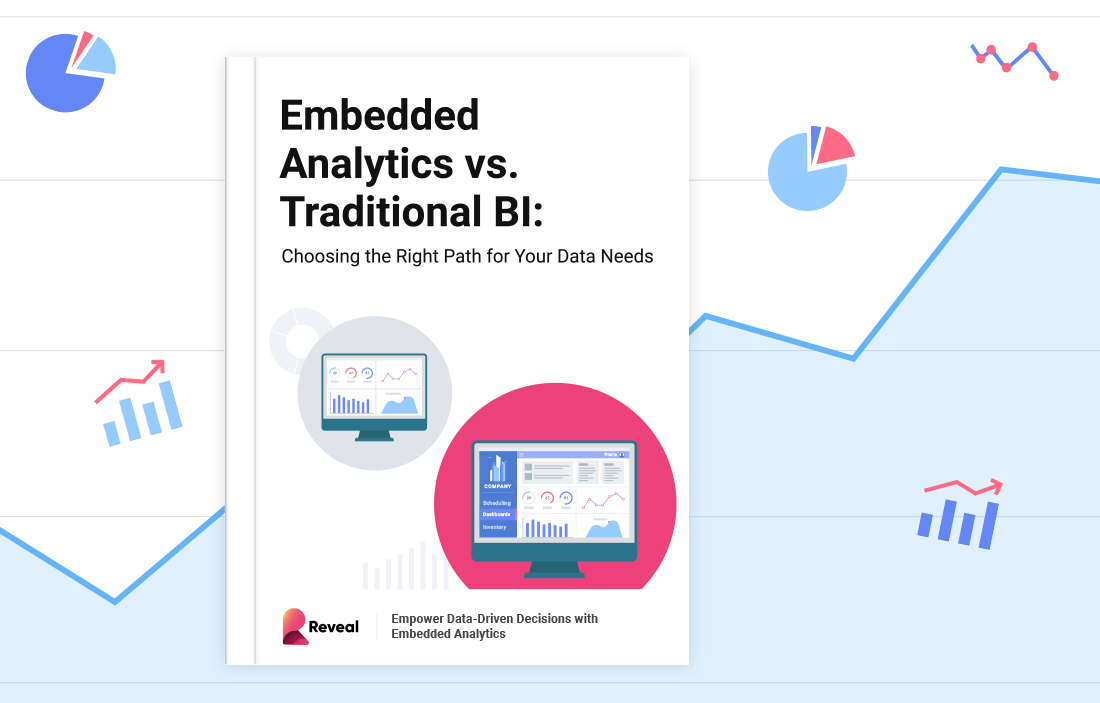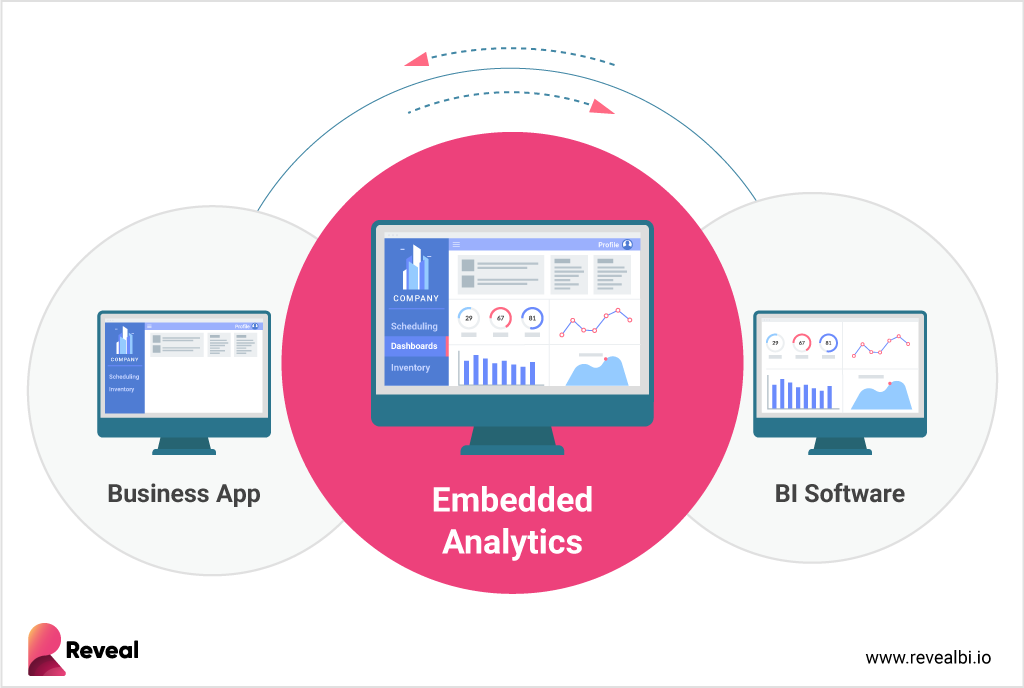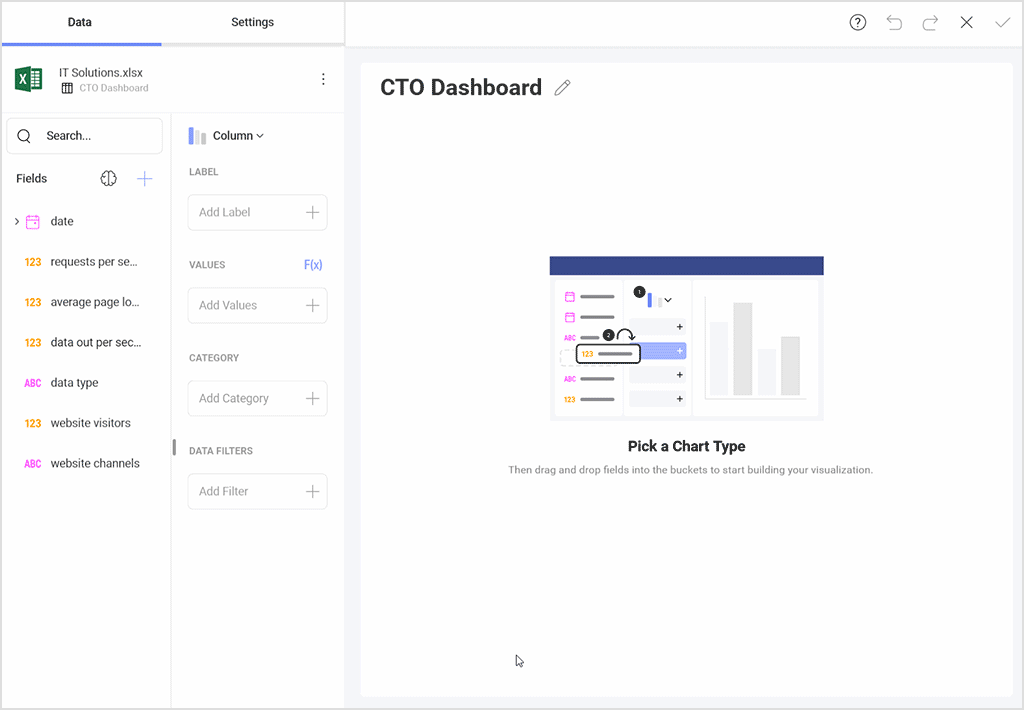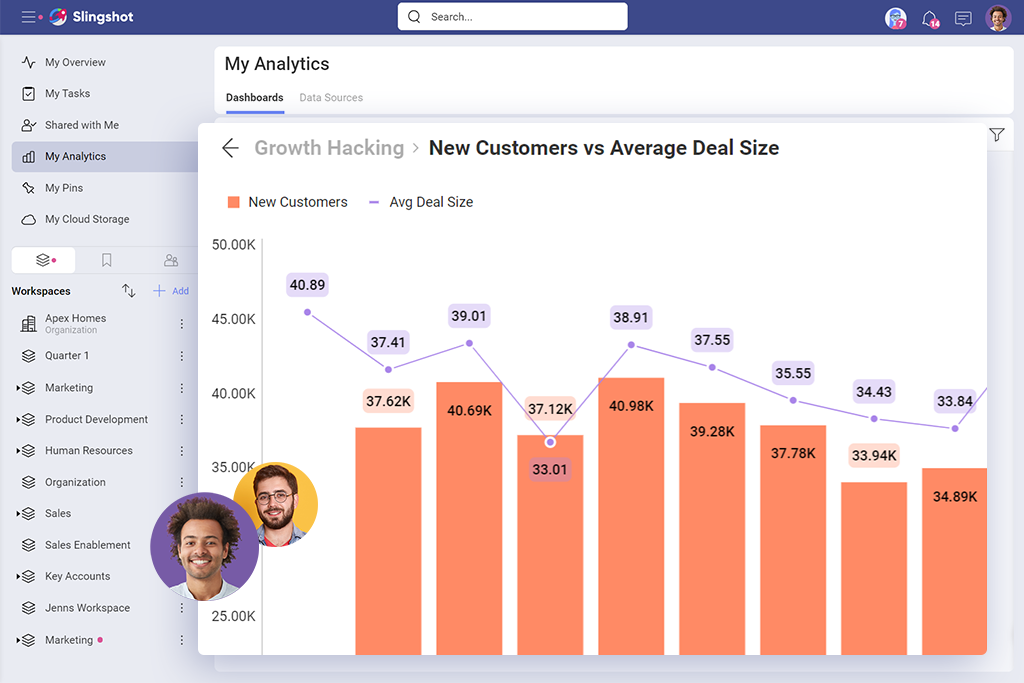
Scriptly Helps Pharmacies Identify Trends in Real Time with Reveal

Now more than ever, businesses are inundated with data, requiring robust tools for analysis, decision-making and driving growth. The landscape of data analytics is dominated by two models: Embedded Analytics and Traditional Business Intelligence (BI).
Each offers distinct benefits and could be pivotal in leveraging data to drive business success.
This whitepaper delves into these approaches, providing a comprehensive comparison to aid in selecting the optimal tool for your analytics needs.
Fill out the form to continue reading.
Traditional Business Intelligence (BI) encompasses a suite of tools and processes developed over decades to analyze and present business data. It supports strategic decision-making through structured data extraction, analysis, and reporting. Traditionally, BI systems are standalone solutions requiring distinct operational efforts from the core business processes, often requiring specialized technical expertise for effective management and utilization.
Key characteristics of traditional BI:
Embedded Analytics integrates analytics capabilities directly into business applications, enabling real-time data analysis and decision-making within the workflow. This approach aligns analytics with everyday business operations, enhancing accessibility and immediacy of insights.

Embedded analytics offers several advantages over Traditional BI, making it an attractive choice for organizations seeking dynamic and data-rich solutions:

Here’s a side-by-side comparison to help you make an informed choice:
| Key point | Embedded Analytics | Traditional BI Tool |
|---|---|---|
| Integration | Seamless with business applications, minimizing workflow disruptions. | Stand-alone, often causing workflow interruptions. |
| User Accessibility | Designed for intuitive self-service, accessible to both technical and non-technical users. | Typically requires specialized training for non-technical users. |
| Integration with Business Processes | Seamlessly integrates with existing business applications, reducing workflow disruption. | Often operates as a separate system, requiring users to switch between applications. |
| Customization and Flexibility | Highly customizable to match the host application branding and user experience. | Customization may be limited, and changes can be time-consuming. |
| Data Sharing and Collaboration | Encourages real-time collaboration within the context of the host application. | Collaboration may require switching to another system or exporting reports outside the BI system to share. |
| Cost and Resource Allocation | Transparent pricing models with predictable costs, often eliminating the need for significant infrastructure investments. | Costs may include per person software licenses, data storage and IT resources for maintenance. |
| Scalability | Offers scalability without significant investments, allowing for quick adaptation to changing demands. | Scalability may require additional hardware or resources leading to complexity and increased costs. |
| Access Control | Provides role-bases access control to safeguard data and maintain compliance. | Role-based access control is a standard feature for ensuring data security. |
Now that you know the differences between these approaches, let’s uncover two solutions to meet your desired needs.
Slingshot revolutionizes the BI landscape by integrating analytics directly into your daily business tools. This integration ensures that data insights are always at your fingertips, enhancing decision-making processes and operational efficiency.
Imagine a world where your analytics are not just numbers on a screen but a fully integrated part of your daily business toolkit. Slingshot makes this a reality by embedding analytics directly into your operational tools, ensuring that data insights are accessible and an integral part of your decision-making process.
Consider the case of a mid-sized retail company facing the challenge of rapidly changing market trends. With Slingshot, they seamlessly integrated analytics into their inventory management system. Sales data, customer preferences, and supply chain logistics became instantly accessible, enabling them to make agile decisions.
But Slingshot’s capabilities continued beyond data integration. It also provided a collaborative platform where team members could discuss insights in real time, initiate actions, and manage projects directly from the analytics dashboard. This fostered a data-centric culture where every team member could contribute to decision-making and strategy execution. The result was not just optimized stock levels and reduced waste but a more cohesive team working synchronously to improve customer satisfaction. Slingshot didn’t just provide data; it transformed the company’s approach to business intelligence, making it a dynamic, real-time asset rather than a static, retrospective report.

Reveal stands at the forefront of embedded analytics, offering a solution that transcends traditional boundaries through its advanced embedded SDK. This embedded SDK technology surpasses the outdated iFrame integration methods, providing a robust, flexible, and secure analytics environment that is easy for everyone to use.
Picture a financial services firm grappling with the need for real-time risk assessment. With Reveal’s embedded analytics, they integrated sophisticated risk analysis tools directly into their transaction processing systems. This integration enabled them to detect and mitigate risks instantaneously, safeguarding their operations and enhancing client trust. Reveal empowered them to not only react to risks but to anticipate and address them proactively, showcasing the power of embedded analytics in turning challenges into opportunities.
By choosing Reveal, businesses can harness the full potential of their data, ensuring that analytics are not just an added feature but a core component of their operational ecosystem. This integration promises not just insights but a transformation in how businesses operate, making data-driven decisions the backbone of their success.

The choice between embedded analytics and traditional BI hinges on your business’s specific needs for data accessibility, integration, and operational fluidity. Reveal stands out as a leader in the embedded analytics space, offering a solution that is not only technologically advanced but also user-centric and cost-effective.
Explore Reveal today by requesting a demo or downloading our SDK. Join the global community of businesses that have leveraged the power of embedded analytics to achieve success.
Back to Top